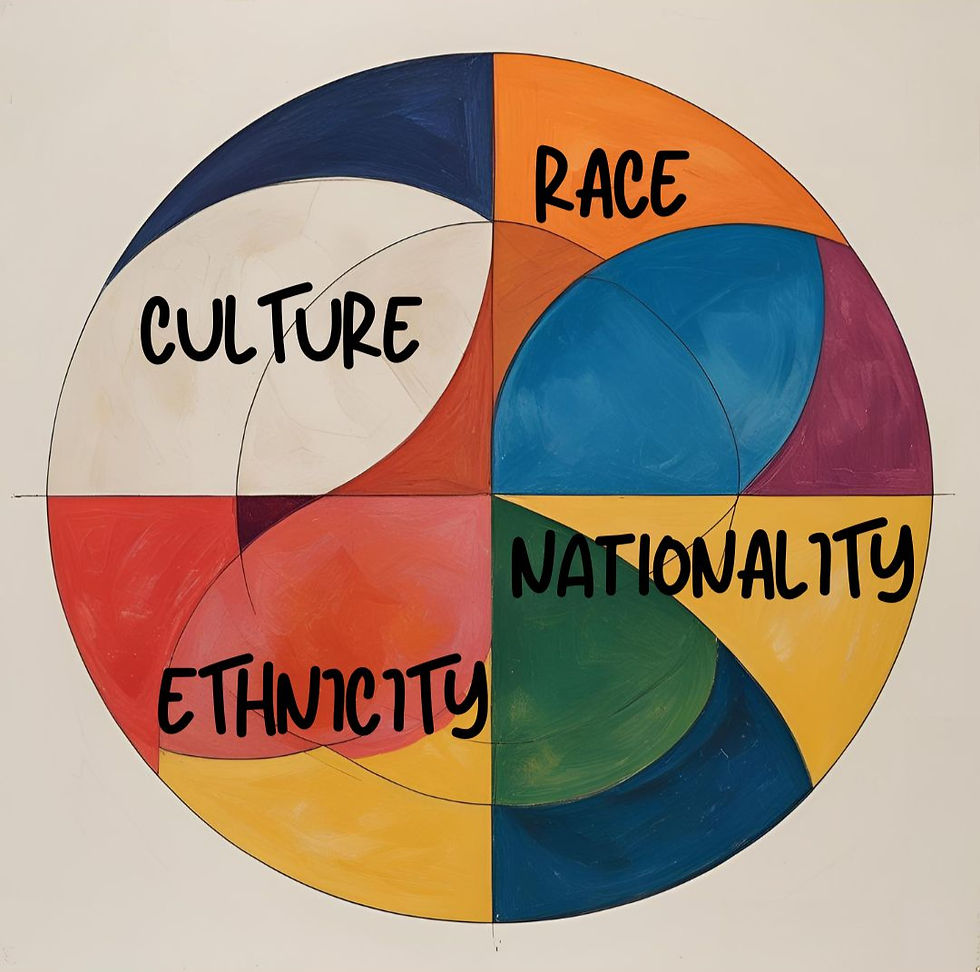Culture, Race, Ethnicity, Nationality: 4 identity terms you think you know
- Barbara Hawley

- Aug 14
- 2 min read
Updated: Sep 16

Whether in a classroom, a dinner conversation, or filling out a form, most of us have used these terms interchangeably. But in our efforts to be precise and respectful, let's look at the nuances between them.
First, here’s a moment from my short story Beyond the Deep (you can grab it for free here on my website). Julie, my main character, is at a camp for Third Culture Kids (TCKs), where identity is anything but simple.
I jostled into Kenji as he charged from his classroom. “Sorry!” Then I noticed the sign on his classroom door. “Wait, you’re in the German group?” “Yep. I’m a German citizen from Düsseldorf.” Kenji looked like he was used to explaining. “It’s called ‘Little Tokyo.’” “Cool,” I said, reminding myself that a Japanese boy from Germany living in the Philippines wasn’t that strange among TCKs.
In today’s mobile world, this kind of layered identity is becoming more common—and more confusing. So let's look at four terms that often get mixed up, but really shouldn’t.
1. Culture: The shared beliefs, customs, arts, social behaviors, and achievements of a group. Think: food, holidays, language, values, and traditions. Most fluid. You can adopt a culture, blend cultures, or even create your own family culture!
2. Race: A socially constructed category based on perceived physical traits. Not biologically grounded. It’s shaped by history, politics, and society—not DNA tests or eye color charts.
3. Ethnicity: Identity based on shared ancestry, language, history, or cultural heritage. More internal. It’s about where your people come from, the stories they tell, and the traditions they carry.
4. Nationality: Legal affiliation with a specific nation-state. More external. It’s your passport, your citizenship, your official “I belong here” status.
Here's how it can get tricky. A person can be:
Ethnically Korean
Culturally American
Nationally Canadian
And racially Asian
(How fun is that??)
⭕Try this identity map activity with kids: Draw four circles labeled Culture, Race, Ethnicity, and Nationality. Inside each one, ask your child to write what they know about themselves. It’s a great way to spark conversation while teaching how to differentiate terms.





Comments